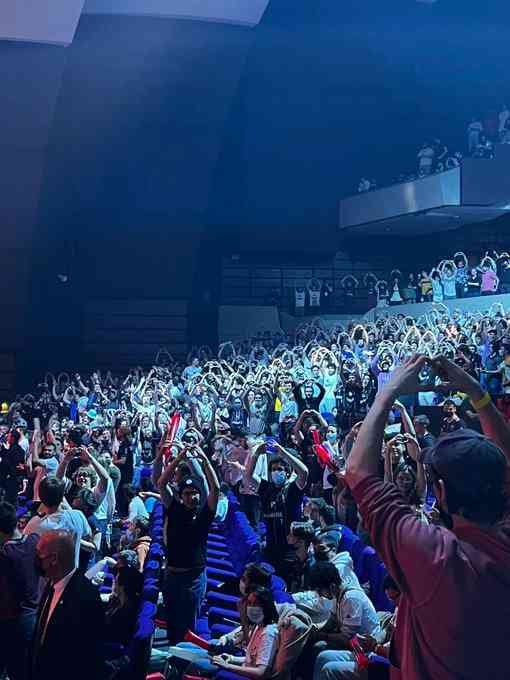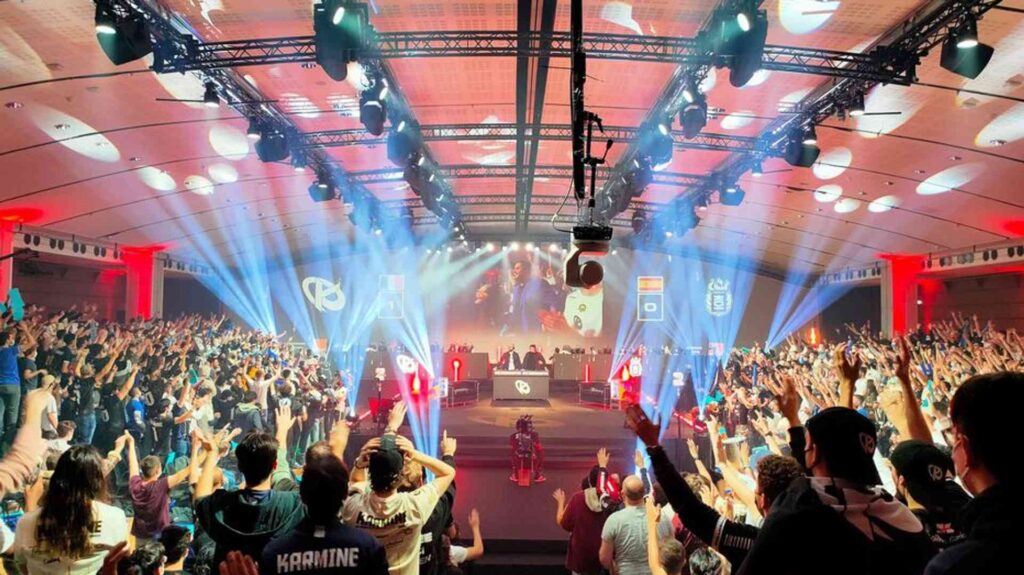Karmine Corp are off to a very bad start in this year’s LFL, with only two painful victories for four defeats, while the atmosphere around the ‘ultras’ and their favorite club feel somewhat off. Yet if such hostility between an organization and its fans is new in esports, this is very common in traditional sports. And in this case, it’s not an accident.
Silent majority, noisy negativity
Open a pre-match or a post-defeat tweet from Karmine Corp’s official account regarding their League of Legends team, scroll down past the first sponsored replies by Orange, Logitech, Michelin, and Red Bull, and you’ll find a very intriguing scene for an esports organization’s social media interactions.
Granted, there are still reiterated claims of support and solidarity no matter what happens. Plus, we still have to consider the silent majority, made up of fans who don’t post many tweets, if any, and continue to support and wait for better days. But overall, less and less supportive, kind, ‘we’ll bounce back’ messages are to be seen, while the rate of tweets demanding accountability or starting bashing campaigns rises.
And this is not only in the official account’s replies. First, though to a lesser extent, it also happens under the owner (famous streamer Kamel ‘Kameto’ Kebir). Second, KCorp has such a big community that discussions happen outside the organization’s ‘controlled’ space. The team’s and/or the match’s hashtags are, in fact, almost always trending topics on the global French Twitter when KCorp is playing, precisely as with the most popular football clubs of the country. This means that some fans have fostered small communities of thousands of followers around what they think of the organization, its direction, its players, its transfers, its dramas, etc.
Therefore, certain players like Muhammed ‘Kaori’ Åentürk or Duncan “Skeanz” Marquet became easy targets for bashing or even harassment campaigns that go beyond toxic comments in the broadcaster’s chat (which often has to resolve to the subscribers-only mode during Karmine Corp’s games) and consist of permanent tweets under the organization’s account or even their accounts. The coaching staff, blamed for recurrent “drafts diff,” as well as popular executives like Zouhair ‘Kotei’ Darji, who are more or less responsible for handling the transfer market, are not left out. Even community managers must deal with difficult Twitter replies on their accounts.
Misunderstandings?
On the other hand, it must be admitted that Karmine Corp deployed a rather poor public response. Although it is difficult for content strategists to share engaging insides when the team is losing, their social media are doing little but rolling out the (great, by the way) communication plan that was decided upon ahead of time. And if the visuals and the brand’s identity are still more than on point, the tone does feel a bit out of touch as the win-loss record darkens.
Other members of the organization shared on their accounts how surprised they were by the community’s reactions to such difficult times, which sometimes led to the aforementioned even more virulent messages, as well as, it should be mentioned, supportive comments.
At this point, we must also acknowledge that KCorp is far from being ruled out of any title pretension. A 2-wins-4-losses record is exactly the situation they were in at the same time last year, before finishing 2nd in the regular season (reaching even the 1st place only to be overtaken by LDLC OL in the last week of the split) and clinching their second EU Masters title. And if one could argue that the atmosphere or the players just do not convey the same vibe this time, we will not venture to make any predictions. However, as we have seen so far, the social (media) interactions around this team are interesting.
The supporters-fans distinction
Those interactions say something about the organization Karmine Corp. They show that esports clubs embodied by a streamer are not immune to intense criticisms from their fans. And that, in some cases, the feeling of the club as a powerful entity superior to any individuals, including the streamer-owner himself, takes over.
But more importantly, they do say something about the esports industry. They are very symptomatic of behaviors we can find in traditional sports. Hence the existence of official supporters’ associations established by law, with the likes of the Blue Wall for Karmine Corp and the Golden Hornets for Team Vitality. This amounts to a distinction between fans, which join just to cheer once or twice a week, and supporters, who act as (sometimes literal) stakeholders of the club and ensure the associative life around it. And it should come as no surprise given that the community brought about by Kameto is not typical of usual esports enjoyers. Many of them discovered League of Legends with their favorite streamer’s team. Taking a quick look at their profile pictures, it is not rare to find a football player on a blue wall background, testifying of the milieu they formerly or simultaneously engage(d) with.
 The Blue Wall stands from the Golden Hornets’ stands during the LFL Days in Nice, France. (Image credit: @shynouh via @GoldenHornets)
The Blue Wall stands from the Golden Hornets’ stands during the LFL Days in Nice, France. (Image credit: @shynouh via @GoldenHornets)Since it’s esports, it’s mainly digital, but physical on-stage events have shown that Vitality’s and KCorp’s stands do live like European football or basketball clubs’ stands ‘ from the separate ticketing to the chants learned by heart and orchestrated by a kapo. Even closed forums exclusive to core supporters are sort of replicated in their digital landscape.
This (long-time coming) turning point in fans’ identity marks the transformation of esports, in some cases, as a sport. And by that, we do not mean to reignite the usual boring debate about whether or not esports are a physical activity and should be or should not be at the Olympics. Rather, a sport, as in (members of) its communities, adopt the same behaviors and habits as in traditional sports ‘ including bashing their team.
In view of this, Karmine Corp’s current stint illustrates just that. Since traditional sports clubs have been around for ages, they have known successful, boring, and disastrous cycles, and so have their fans, with several generations of which coexist. On the contrary, the esports industry is young enough to comprise clubs that always have been frontrunners. This didn’t prevent others from having known ups and downs, but in the case of Karmine Corp, it is quite new for the League of Legends esports scene. And the magnitude of the fanbase makes it very interesting to study.


